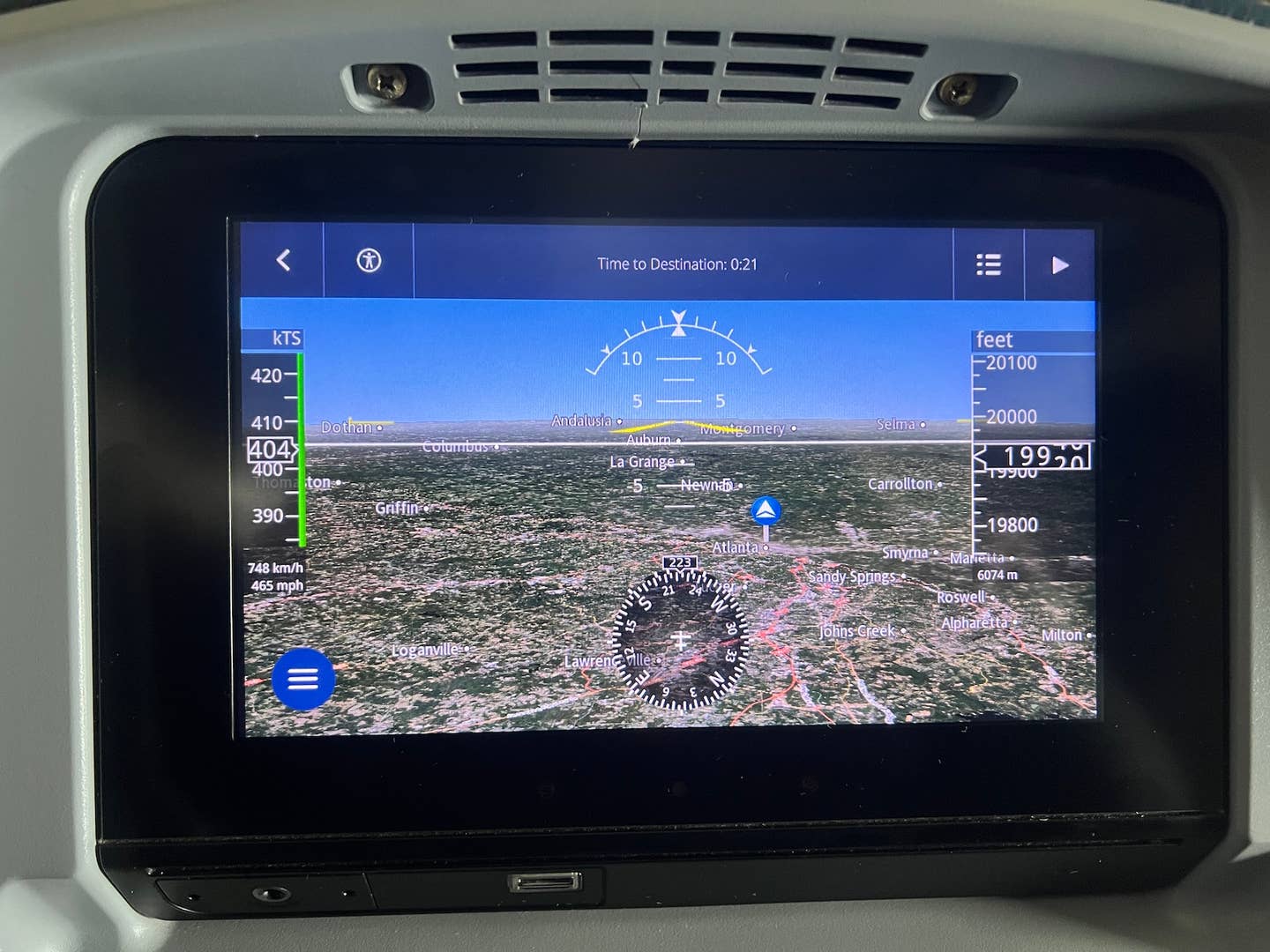What To Think About SAF
The airlines would have you believe they’re all in on sustainable fuel. But real questions remain if there’s enough biomass to make it work.

While I was researching this week’s video on aviation’s role in greenhouse gas emissions—and especially SAF—one phrase kept recurring in my overstimulated brain: window dressing, albeit sincere window dressing. On the light side of general aviation, the attitude is that the warming planet thing doesn’t really exist, so let’s not even talk about it. And those who acknowledge the data and accept the reality—maybe a third to half of our audience—don’t want to talk about it, either. I’m in that cohort myself. Except I will talk about it because it's my wont to throw rocks at sacred cows.
In the airline world, it’s a different story. The airlines and companies that supply them—Boeing and Airbus and engine makers who supply them—are among a few segments in American industry who understand long timelines. Boeing announced the 787 in 2003, but saw the need earlier than that, yet the model didn’t enter commercial service until 2011. Even earlier, they foresaw shifting attitudes toward climate change and understood aviation’s singular vulnerability for needing more joules per revenue mile than any other form of transportation. And joules equal carbon.
While the piston brain trust made sure to sabotage unleaded fuel at every turn, the turbine mafia, as I’ve heard it called, not only jollied along the development of sustainable aviation fuel, it got various kinds of it certified for transport category aircraft. Imagine. You can’t buy high-octane unleaded gasoline, but you can find SAF—at $9 a gallon—for your PT-6 at a large handful of airports.
Is this a good thing? After immersing myself in this subject for several months, I can only conclude it’s the only thing. The air transport industry collectively realized it would need a credible effort to “decarbonize,” as they say in the climate biz. And even though turbojet engines are making great strides in efficiency, those gains are likely to be offset by the bullish growth the airline industry sees ahead.
I have questions, however. The reporting on SAF—including what appears here on AVweb—is snapshot stuff, giving the impression that SAF plants are springing up like mushrooms and that we’re headed for a sunny, bright green future. The reality is less rosy. The stories note that SAF production is rising, but often don’t put this is in the context that current production represents 0.1 percent of demand and established goals will be difficult to meet because of lagging investment and feedstock shortfalls.
The airlines and airplane makers are happy to have you believe they’ve got this and decarbonization is well in hand, but it’s a lot more iffy than that. This is the PR war that Qatar Airways’ CEO Akbar al Baker referred to in saying the way things are going now, the march toward airline net zero carbon is an illusion. He isn’t saying it can’t be done, just that it won’t be by adhering to the current approach. He didn’t mention it, but the airlines are also happy to have you believe this guilt-free passage to a lower carbon world won’t cost more. It will. Also left unsaid is that reducing carbon at this stage may or may not be an effective mitigation against further warming.
The most popular current SAF pathway seems to be HEFA, for hydroprocessed esters and fatty acids. This method relies on used cooking oils, animal fats and oily vegetable matter for feedstocks. In the future, it might rely on algal oil purpose grown for fuel. But there’s not enough of this stuff to meet the demand and there’s already pressure on what supplies exist from the biodiesel market. So bear that in mind when you read these stories. Not to be too cynical about it, but I’m sure these companies firing off press releases are just as happy to appear to be doing something green as actually doing something, hence al Baker’s comment about PR.
Then there’s the veracity of the actual carbon intensity claims. In the press, we tend to ape what others have reported, that SAF is 50 to 80 percent less carbon intensive than conventional Jet A. But when I was comparing notes on this with refinery expert Paul Millner, he reminded me that in the petroleum business, the rule of thumb is that the carbon follows the money. SAF is presently two or four times more expensive than Jet A, and although some of that may be due to scarcity of feedstock and materials, it’s also true that more process heat, transportation of biomass and catalysts represent human effort and in the modern industrial world, that equates to carbon emissions. To be fair, this industry is in its infancy and efficiency gains are inevitable. It’s yet too soon to say where the economics will go, but the Bain study I quoted in the video reckons that SAF will remain two to four times more expensive than Jet-A and electrics and hydrogen power won’t play a meaningful role for the foreseeable future.
One thing that might play a role in SAF economics is the continuing growth of renewable energy in the form of wind and solar. Because of manufacturing inputs, these are hardly carbon free, but their direct emissions are admirably green. If the economics of wind and solar continue a favorable trend and are paired with SAF production, the carbon budget looks better.
I remain mildly optimistic that SAF at least represents a rational policy response where little else but denial is an option. And speaking of rivers in Egypt, I live in Climate Hell Disneyland—Florida—and have learned some things. First of all, humankind is, on balance, showing itself to be galactically moronic in uniform responses to living in a warmer world. If you’re an anthropogenic climate change denier, well bully for you, but you still have to live in the same world I do. Three cases in point.
Exactly a year ago this week, Hurricane Ian came ashore as a strong Cat 4 storm and essentially scrubbed the barrier islands around Fort Myers clean of habitable structures. After the storm, up went the Fort Myers Strong signs and they’re rebuilding on the same barrier islands. Maybe they’re using extra nails, but in no way is this a sane response to a warming planet. Those islands should be barren sand spits if we hope to avoid a rinse-and-repeat of Ian because if we know anything, we know that’s coming.
Edging closer to the perfect definition of insanity is what happened at my home airport, Venice. We were north of the core of the storm, but it was strong enough to knock down one entire block of hangars and remove and destroy the sliding doors from many others, taking the airplanes with them. We’ve long known that sliding-door hangars are the wrong choice in hurricane-prone areas. The airport knew it, too. In one iteration of its master plan was replacing the sliding doors with bi-fold doors, which are all but immune to wind lifting. For reasons probably related to budget, it never got done. Now the insurance company doing the repairs is replacing the old sliding doors with, wait for it, more sliding doors. They may have stronger or exterior cane bolts, but this is an example of shortsighted decision making and an utter failure to understand the implications of living in a world where 90-degree sea surface temperatures are no longer rare, whether we believe it’s caused by human emissions or not. And like property in general in Florida, I wonder if those hangars will remain insurable.
And by the way, I don’t attribute Ian’s occurrence directly to climate change, I attribute a higher likelihood of it happening again to climate change.
Even those of us who do understand can be thwarted by companies looking only as far as the next quarter. Four years ago, I called my insurance company and asked for the loss prevention department. “Huh,” the lady said, “we don’t have one of those.” Having sought ways to harden the house against damage, I thought I was working in our mutual interest. I was rewarded two years later by having the company drop our coverage.
So against this backdrop, and despite some skepticism, I’m still happy to see SAF trying to carve an actual market share. It won’t turn things around, but we can all hope it may contribute to at least not making things much worse by blindly stumbling along in the status quo.






